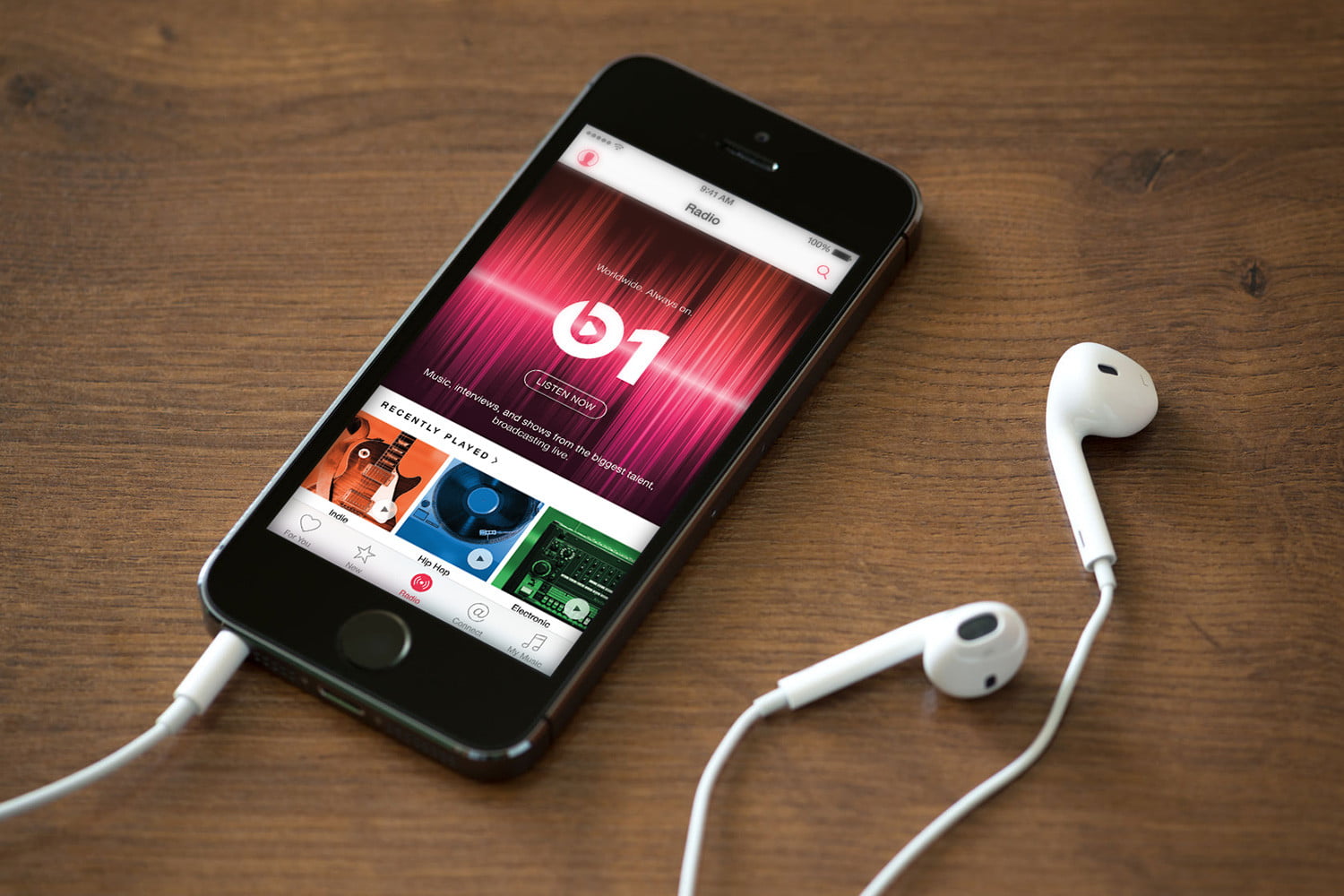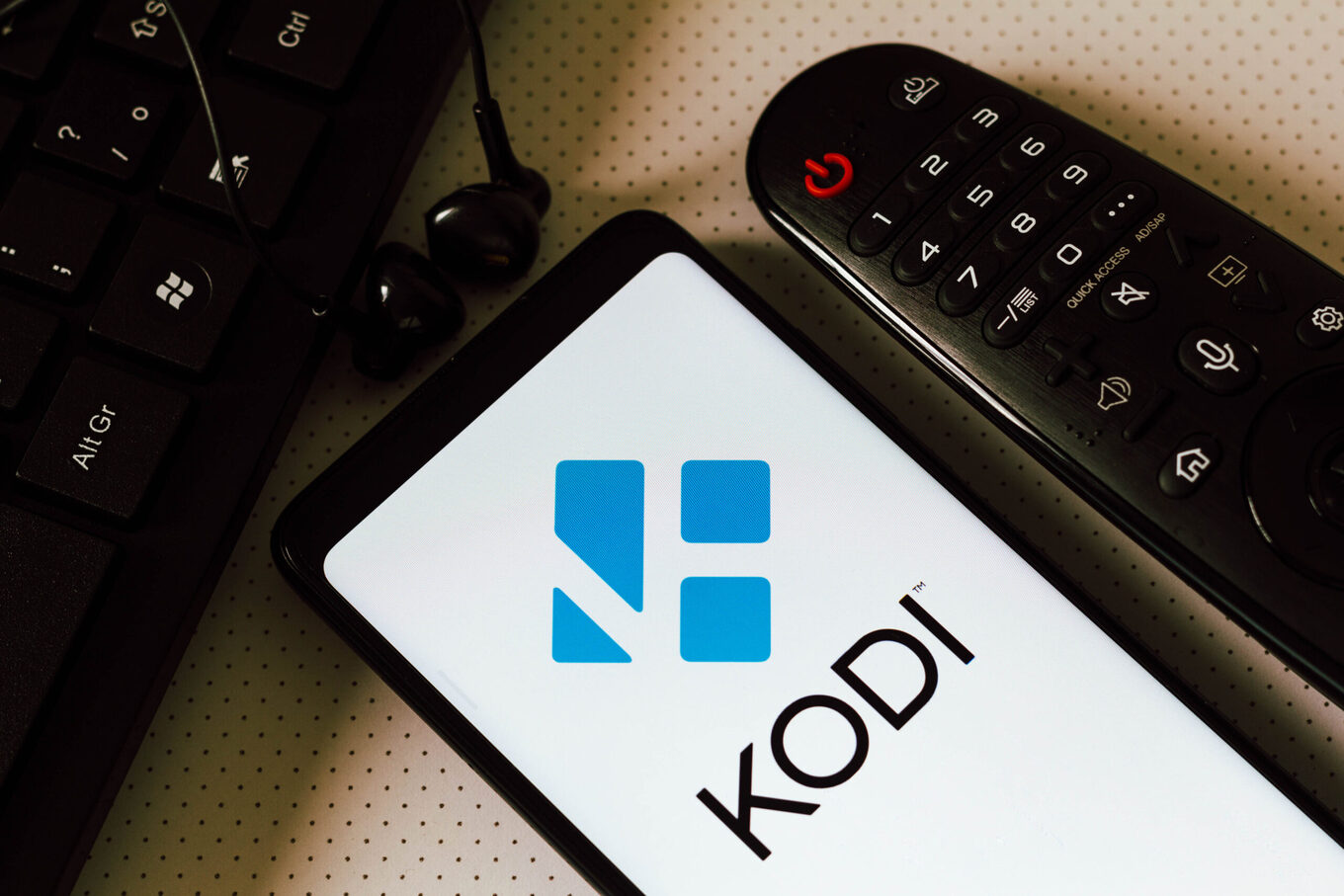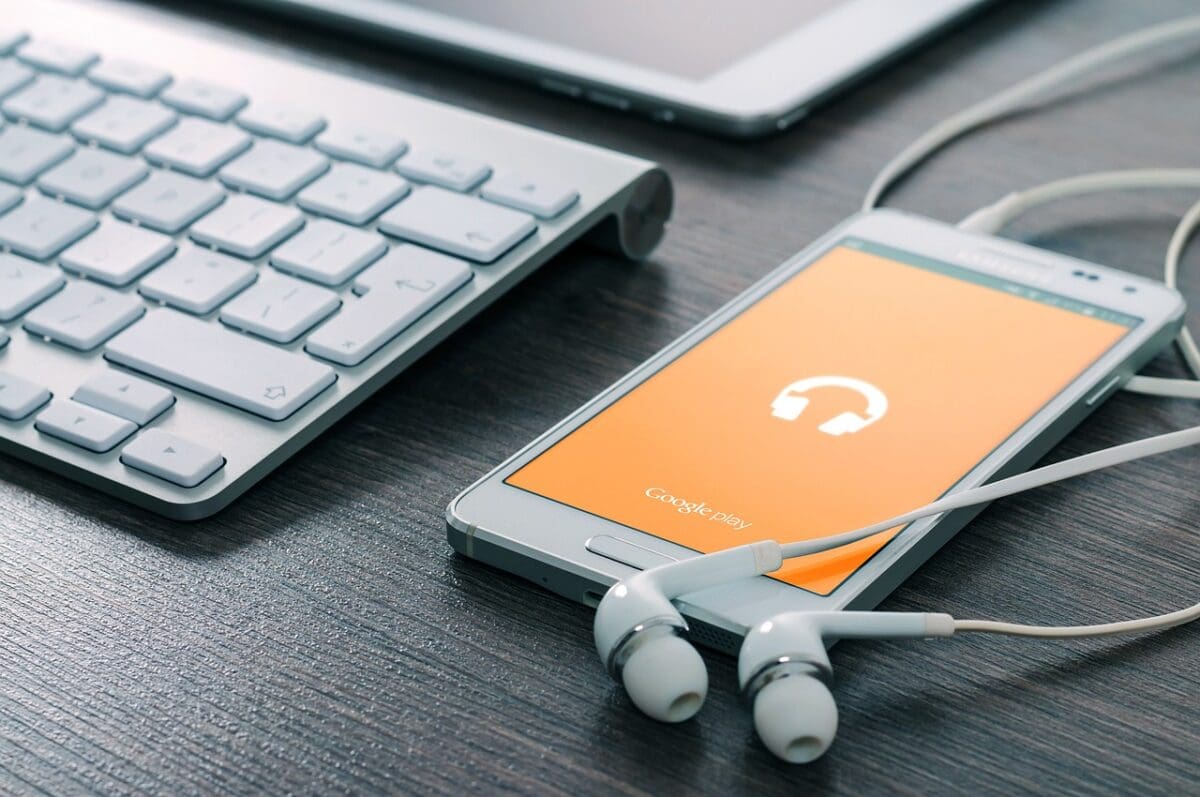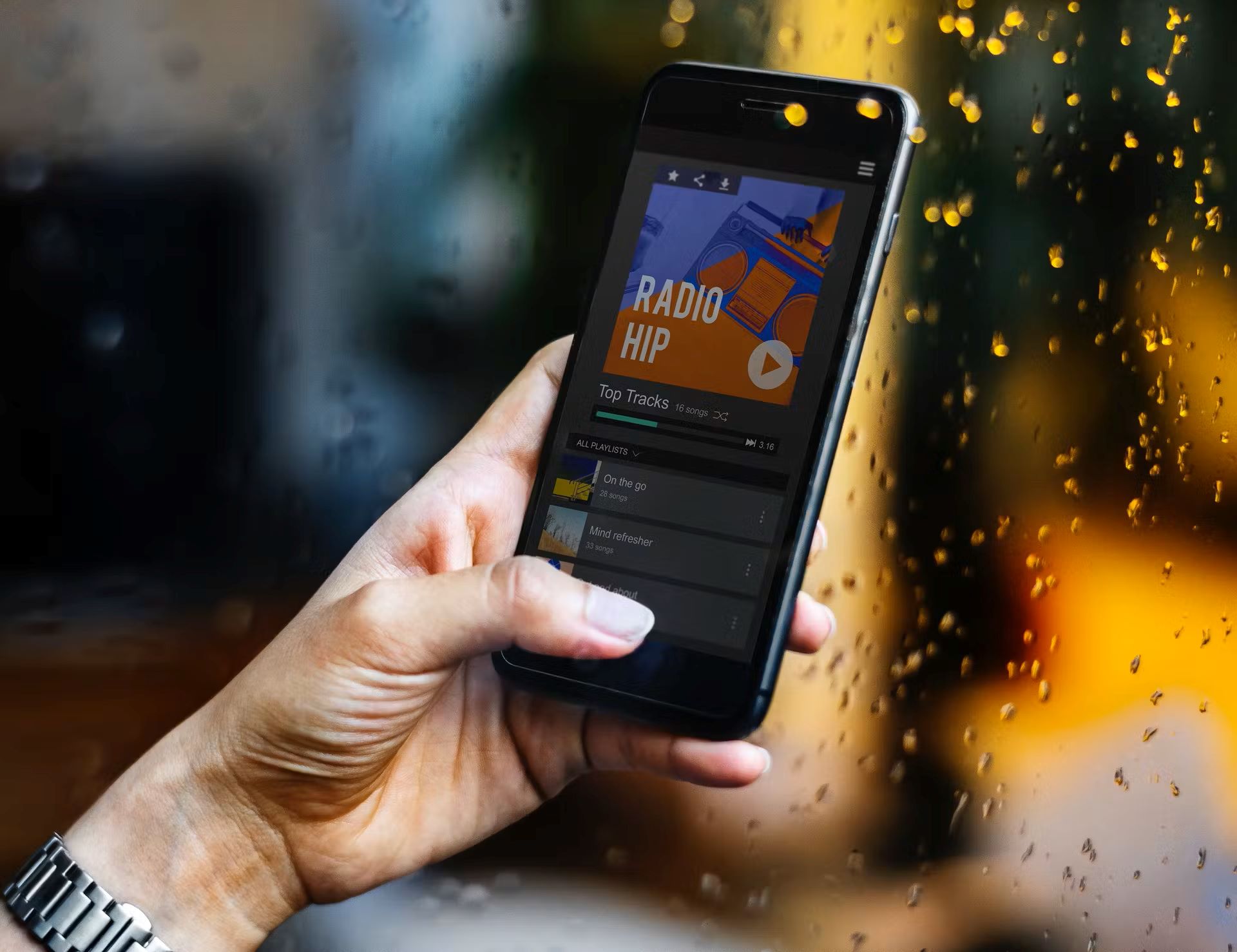Home>Devices & Equipment>Streaming>Which Music Streaming Uses The Least Data


Streaming
Which Music Streaming Uses The Least Data
Published: March 9, 2024
Discover which music streaming service uses the least data and optimize your listening experience. Compare data usage for streaming services now!
(Many of the links in this article redirect to a specific reviewed product. Your purchase of these products through affiliate links helps to generate commission for AudioLover.com, at no extra cost. Learn more)
Table of Contents
Introduction
In today's digital age, music streaming has become an integral part of our daily lives. Whether we're commuting to work, working out at the gym, or simply relaxing at home, streaming music offers a convenient and immersive way to enjoy our favorite tunes. However, as much as we love streaming music, it's essential to consider the impact it has on our data usage, especially for those with limited data plans or when using mobile networks.
Understanding how much data different music streaming services consume can help users make informed decisions about their streaming habits. By exploring the data usage of popular music streaming platforms, we can gain valuable insights into which services are more data-efficient, ultimately enabling users to optimize their streaming experience while minimizing data consumption.
In this article, we will delve into the world of music streaming and examine the data usage of various platforms. By comparing the data consumption of leading music streaming services, we aim to shed light on which options are more data-friendly, empowering users to make informed choices that align with their data needs and preferences. Additionally, we will provide practical tips for reducing data usage while streaming music, ensuring that music enthusiasts can enjoy their favorite tracks without exceeding their data limits.
As we embark on this exploration of music streaming and data usage, it's important to recognize the significance of optimizing our streaming habits to strike a balance between enjoying high-quality music and managing data consumption effectively. Let's dive into the realm of music streaming data usage and discover how we can make the most of our favorite tunes while using the least amount of data.
Understanding Data Usage in Music Streaming
When it comes to music streaming, data usage is a crucial factor that directly impacts the overall streaming experience. The amount of data consumed while streaming music varies depending on several key factors, including the streaming quality, the duration of streaming, and the specific platform or service being used.
Factors Affecting Data Usage
Streaming Quality:
The streaming quality, often measured in kilobits per second (kbps), significantly influences data consumption. Higher quality streams, such as those in high definition or lossless audio formats, require more data compared to lower quality streams. For instance, streaming music at 320 kbps will consume more data than streaming at 128 kbps.
Duration of Streaming:
The duration for which music is streamed directly impacts data usage. Longer streaming periods naturally result in higher data consumption. Whether it's a brief listening session or an extended playlist, the duration of streaming plays a pivotal role in determining overall data usage.
Platform or Service:
Different music streaming platforms and services may have varying data consumption rates. Factors such as compression algorithms, audio formats, and overall streaming efficiency can influence how much data is utilized during music playback.
Data Usage Estimates
To provide a clearer understanding of data usage in music streaming, it's helpful to consider some general estimates. For example, streaming music at standard quality (approximately 128 kbps) typically consumes around 1 MB of data per minute. In contrast, streaming at higher quality settings, such as 320 kbps, can consume approximately 2.4 MB of data per minute. These estimates serve as a useful reference point for gauging data usage across different streaming qualities and durations.
Impact on Data Plans
For individuals with limited data plans or those who frequently stream music on mobile networks, understanding data usage becomes even more critical. Excessive data consumption during music streaming can lead to unexpected overage charges or throttled data speeds, potentially disrupting the seamless streaming experience.
By comprehending the factors influencing data usage and the corresponding estimates for different streaming qualities, users can make informed decisions about their streaming habits. This knowledge empowers individuals to align their music streaming preferences with their data plans, ensuring a harmonious balance between enjoying high-quality music and managing data consumption effectively.
In the next section, we will delve into a comparative analysis of data usage across various music streaming services, shedding light on which platforms offer more data-efficient streaming options. This exploration will equip users with valuable insights to optimize their streaming experience while minimizing data usage.
Let's now turn our attention to comparing the data usage of different music streaming services, providing a comprehensive overview of their respective data consumption patterns.
Comparing Data Usage of Different Music Streaming Services
When it comes to choosing a music streaming service, understanding the data consumption associated with each platform is crucial for making informed decisions. Different streaming services offer varying streaming qualities and data efficiency, directly impacting the amount of data used during music playback. Let's delve into a comparative analysis of the data usage of popular music streaming services, shedding light on their respective data consumption patterns.
Spotify
Spotify, one of the leading music streaming platforms, offers users the flexibility to choose from different streaming qualities, including low, normal, high, and very high. At the low quality setting (approximately 24 kbps), Spotify consumes around 0.18 MB of data per minute, making it a data-friendly option for users with limited data plans. However, at the very high quality setting (approximately 320 kbps), the data consumption increases to approximately 2.4 MB per minute, catering to those who prioritize high-fidelity audio.
Apple Music
Apple Music, known for its seamless integration with Apple devices and extensive music library, also provides users with various streaming quality options. Streaming at the standard quality setting (approximately 256 kbps) consumes around 1.92 MB of data per minute. While Apple Music does not offer explicit control over streaming quality, the platform is designed to adapt to network conditions, optimizing data usage without compromising audio quality.
Amazon Music
Amazon Music offers a diverse range of streaming options, including Amazon Music Unlimited and Amazon Prime Music. The data usage for Amazon Music varies based on the selected streaming quality, with standard quality streaming (approximately 256 kbps) consuming around 1.92 MB of data per minute. Amazon Music's adaptive streaming technology adjusts the audio quality based on network conditions, ensuring efficient data usage while delivering an enjoyable listening experience.
YouTube Music
YouTube Music, known for its vast collection of music videos and user-generated content, offers users the choice to stream music in various qualities. Streaming music at the standard quality setting (approximately 128 kbps) consumes around 1 MB of data per minute. With its video-centric approach, YouTube Music provides a unique streaming experience, catering to users who enjoy music videos alongside audio playback.
Tidal
Tidal, renowned for its emphasis on high-fidelity audio and exclusive content, offers users the option to stream music at lossless quality, consuming approximately 4 MB of data per minute. While Tidal's high-quality audio streaming enhances the listening experience, it is important to consider the higher data consumption associated with lossless audio playback.
By comparing the data usage of these prominent music streaming services, users can gain valuable insights into the data efficiency of each platform. Understanding the data consumption patterns of different services empowers users to select the streaming options that align with their data needs and preferences, ultimately optimizing their music streaming experience while managing data usage effectively.
In the next section, we will explore practical tips for minimizing data usage while streaming music, providing users with actionable strategies to enjoy their favorite tunes without exceeding their data limits. Let's delve into these valuable tips to enhance the data-efficient streaming experience.
Tips for Minimizing Data Usage while Streaming Music
Streaming music while being mindful of data usage is essential for optimizing the overall streaming experience. By implementing practical strategies to minimize data consumption, users can enjoy their favorite music without exceeding their data limits. Here are some valuable tips for minimizing data usage while streaming music:
1. Choose Optimal Streaming Quality
Selecting a lower streaming quality can significantly reduce data usage. Many music streaming platforms offer options to adjust the streaming quality, allowing users to prioritize data efficiency without compromising the listening experience. Opting for standard or lower quality settings can effectively minimize data consumption during music playback.
2. Download Music for Offline Listening
Most music streaming services provide the option to download songs, albums, or playlists for offline listening. By downloading music while connected to Wi-Fi, users can enjoy their favorite tracks without consuming additional data during playback. This approach is particularly beneficial for conserving data when streaming music on the go.
3. Monitor Data Usage Settings
Check for data usage settings within the music streaming app or device settings. Some platforms offer specific settings to control data usage, such as limiting streaming quality over mobile networks or enabling data-saving modes. By customizing these settings, users can proactively manage data consumption based on their preferences.
4. Utilize Wi-Fi for Streaming
Whenever possible, leverage Wi-Fi connections for streaming music. Connecting to Wi-Fi networks eliminates data usage from mobile data plans, allowing users to indulge in uninterrupted music streaming without impacting their data allowances. Prioritizing Wi-Fi for streaming is an effective way to conserve mobile data for other essential tasks.
5. Limit Background Streaming
Be mindful of background streaming, where music continues to play while the app is running in the background. This can contribute to unnecessary data usage, especially if the app is actively streaming music without the user's direct engagement. Closing the app or pausing playback when not actively listening can help minimize background data consumption.
6. Consider Data-Saving Modes
Explore if the music streaming service offers data-saving modes or features designed to optimize data usage. These modes may employ advanced algorithms to reduce data consumption without compromising audio quality, providing a balanced approach to efficient music streaming.
By implementing these practical tips, users can effectively minimize data usage while streaming music, ensuring a seamless and data-efficient music listening experience. These strategies empower individuals to enjoy their favorite tunes while managing their data consumption effectively, ultimately enhancing their overall streaming experience.
Incorporating these data-saving techniques into music streaming habits can lead to a harmonious balance between enjoying high-quality music and optimizing data usage, aligning with the diverse data needs and preferences of users.
Conclusion
In conclusion, the intersection of music streaming and data usage presents a dynamic landscape where users seek to enjoy high-quality music while managing their data consumption effectively. Through our exploration of data usage in music streaming and a comparative analysis of popular music streaming services, we have gained valuable insights into the factors influencing data consumption and the diverse streaming options available to users.
Understanding the impact of streaming quality, duration, and platform-specific data efficiency has empowered users to make informed decisions about their music streaming habits. By recognizing the varying data consumption patterns of leading music streaming services such as Spotify, Apple Music, Amazon Music, YouTube Music, and Tidal, users can align their preferences with data-efficient streaming options that cater to their individual needs.
Moreover, the practical tips for minimizing data usage while streaming music provide actionable strategies for users to optimize their streaming experience. From choosing optimal streaming quality to leveraging offline listening and monitoring data usage settings, these tips offer a holistic approach to conserving data while indulging in the world of music streaming.
As we navigate the digital realm of music consumption, it is essential to strike a balance between enjoying high-quality music and managing data usage effectively. By implementing the insights and strategies shared in this article, users can embark on a data-efficient music streaming journey, ensuring that their favorite tunes remain accessible without exceeding their data limits.
Ultimately, the convergence of music streaming and data usage underscores the importance of informed decision-making and proactive data management. By leveraging the knowledge gained from our exploration, users can embrace a harmonious approach to music streaming, where data efficiency and audio quality coexist seamlessly.
In this era of boundless musical exploration, optimizing data usage while streaming music empowers users to immerse themselves in a diverse array of musical experiences without constraints. As technology continues to evolve, the synergy between music streaming and data efficiency will undoubtedly shape the future of how we consume and savor our favorite tunes.
Let us embark on this journey of data-conscious music streaming, where the joy of music meets the mindfulness of data management, creating a symphony of seamless and efficient music listening experiences for all.











